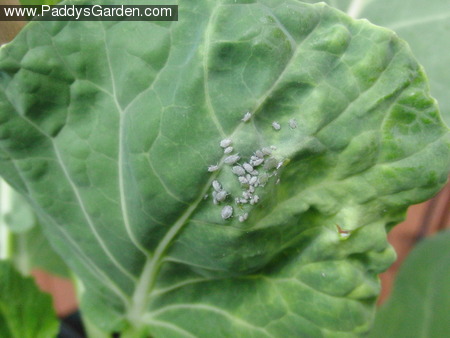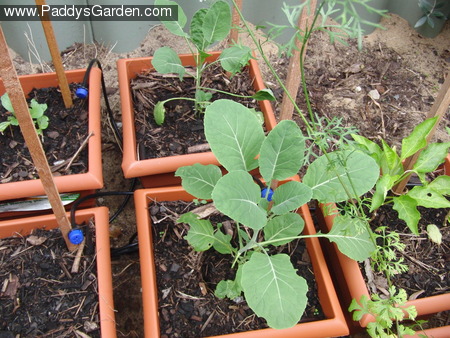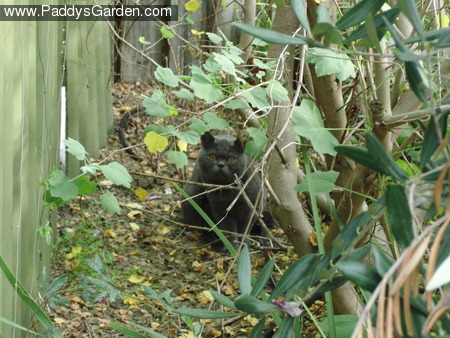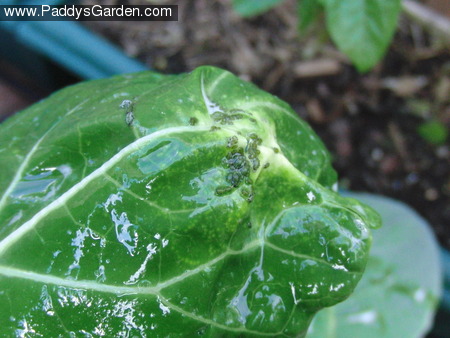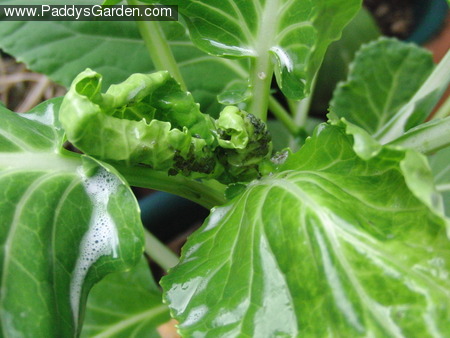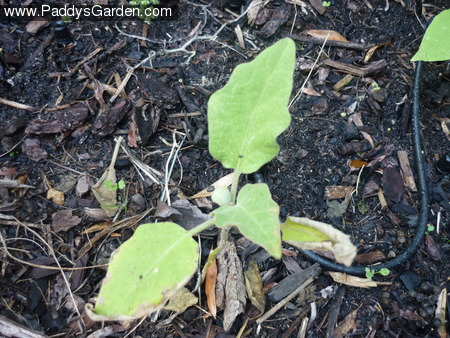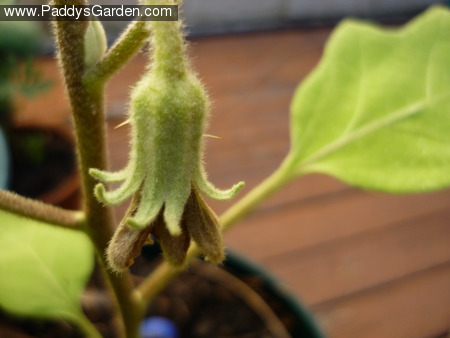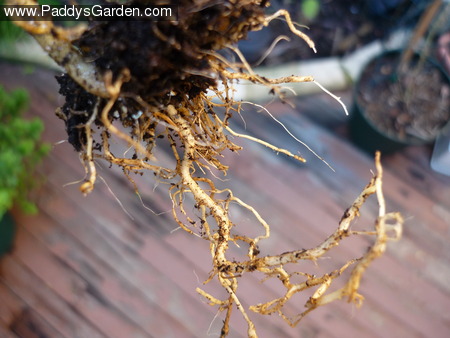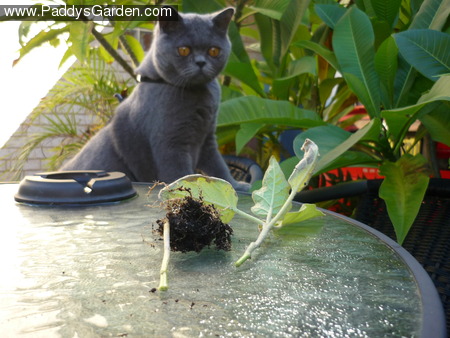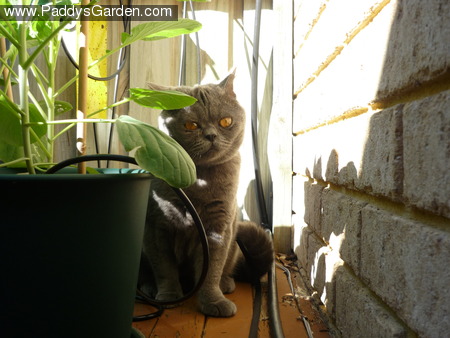Paddy says that mealy bugs are pretty gross little insects resembling a big aphid with (as we can confirm) a voracious appetite for their favorite food, brussels sprouts.
As the people over at Vegetable Garden Guide say in their excellent guide on growing brussels sprouts, Mealy bugs don’t care if you’re just starting out or a veteran gardener – you had better know your enemy.
We were lucky enough to get a heads up from paddy on an imminent massive outbreak of mealy bugs on four out of six brussels sprout plants we have growing.
The mealy bugs hide out in the curled up parts of the leaves. We had at least thirty mealy bugs (and eggs) in both the newly forming shoots as well as the curled up sections of the larger leaves on the infected plants – be warned that there was no visible sign that the mealy bugs were attacking the plants until we looked uncurled the leaves
Whilst the unaffected plants were in a different part of Paddy’s Garden the main reason they hadn’t been attacked was because they weren’t mature enough to grow the leaves that give the mealy bugs somewhere to nest.
Paddy says mealy bugs can be treated just like aphids. If you want to go the organic control route then we recommend mixing up some soap and oil and spraying the mealy bugs on the plants.
If you want something with a bit more staying power mix up some Paddy’s Garlic Fire. As with aphids just knocking them off the plant with a hose spray is often enough to kill the mealy bugs, but it won’t do anyt hing to repel a fresh attack.
hing to repel a fresh attack.
If you like to play god, there are a number of gardening shops on the Internet that sell specialised mealy bug predators, such as Cryptolaemus montrouzieri which are from the same family as ladybugs.
 HorticultureSource.com Mealy Bug Destroyers. 100 per container [IN199]
HorticultureSource.com Mealy Bug Destroyers. 100 per container [IN199]
You can pick yourself up 100 of these mealybug destroyers from amazon for only $70. These insects particularly like to eat mealybugs and when the supply of mealybugs drops they will switch their diet to aphids and will even fly off looking for food in nearby areas. A female will lay about 600 eggs within her 50 day lifetime, so a single colony of Crypts can be enough to control aphids and mealybugs for many years.
Most guides recommend placing only 5 Crypts on each affected plant to build the colon, so you may be able to share some of the Crypts (and cost) with your neighbors.
 If you don”t have time to muck about use Pyrethrum or other organic insect killer spray such as Safer Brand 3-In-1 Insect Control Organic Garden Spray. You’ll need to uncurl each leaf and spray all the bugs otherwise they will continue to lay eggs and breed.
If you don”t have time to muck about use Pyrethrum or other organic insect killer spray such as Safer Brand 3-In-1 Insect Control Organic Garden Spray. You’ll need to uncurl each leaf and spray all the bugs otherwise they will continue to lay eggs and breed.
Because of the large number of mealy bugs on the plants this is the route we went. The spray was immediately effective at killing the mealy bugs on the plant as will go some way to repelling a further outbreak over the next few days.
Paddy says that it’s time to start weeding this area because the grass is coming through the gaps.
and here too…



